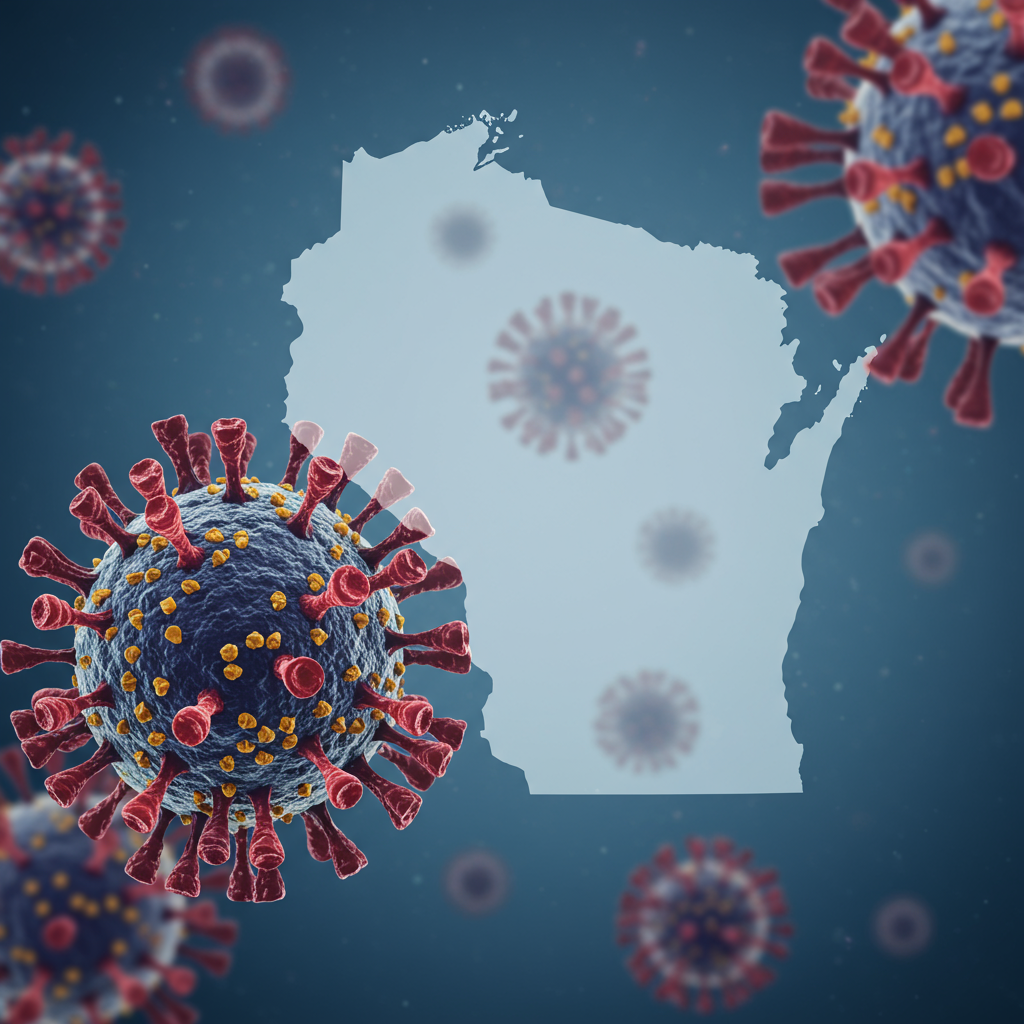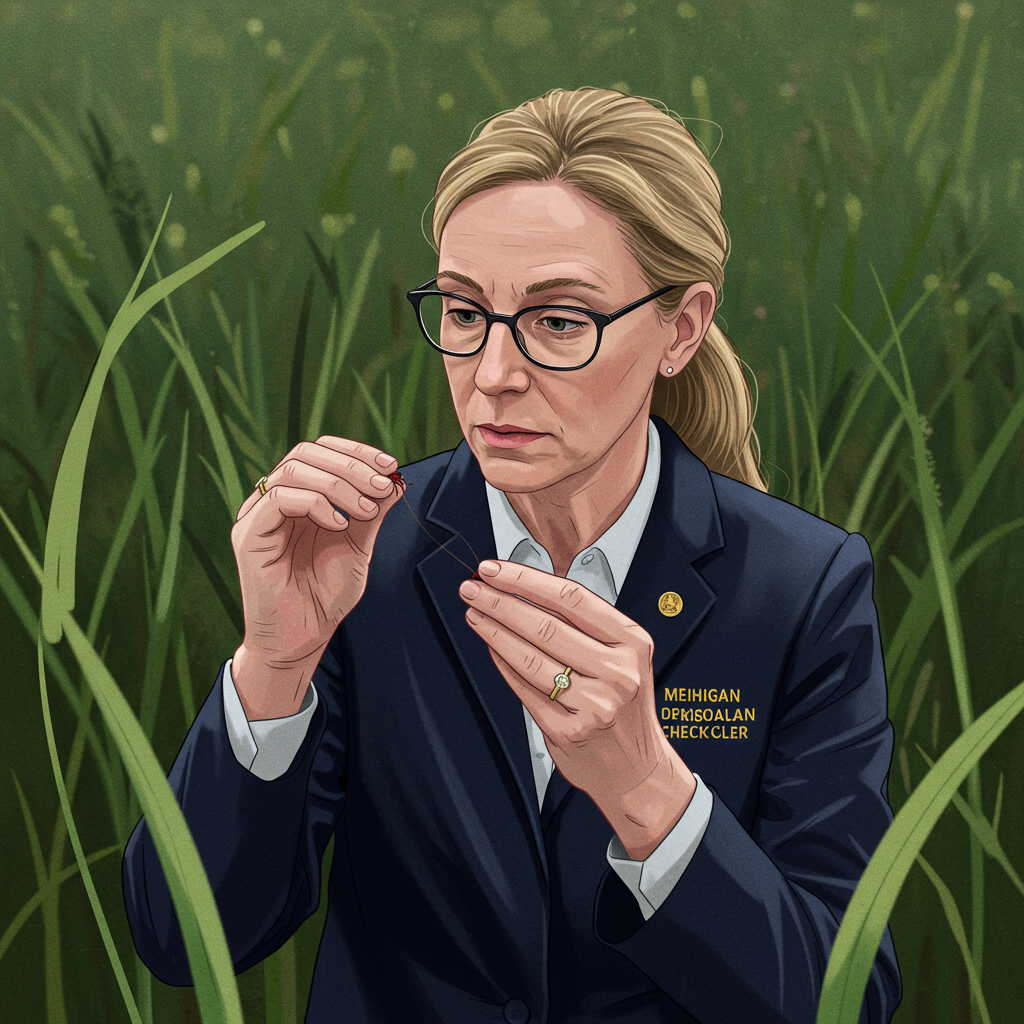A new form of the coronavirus, known as the NB.1.8.1 variant, is circulating globally and has made its way into the United States. Naturally, many in Wisconsin are asking if this latest strain has been detected within the state’s borders.
Here’s what is currently known about the NB.1.8.1 variant and its presence in Wisconsin:
What is the NB.1.8.1 COVID-19 Variant?
NB.1.8.1 is identified as one of the newest variants of COVID-19. Experts describe it as a “slightly upgraded version” of the previously dominant LP.8.1 variant.
First reported in China in January, NB.1.8.1 has since spread rapidly, reaching at least 22 other countries worldwide.
How Prevalent is NB.1.8.1 in the U.S.?
While fewer than 20 cases were reported in the U.S. as of late May, data from the U.S. Centers for Disease Control and Prevention (CDC) shows a significant and swift increase in the variant’s proportion among sequenced cases.
According to CDC variant proportion estimates for the week ending June 7, NB.1.8.1 accounted for 37% of cases, a substantial jump from 15% just two weeks prior (week ending May 24). This makes it the second most prominent strain circulating nationally. However, the CDC notes that these estimates are based on a “low number of sequences,” leading them to use “longer reporting periods” for data collection.
Has NB.1.8.1 Been Reported in Wisconsin?
As of the latest reports, Wisconsin health officials have not confirmed the presence of the NB.1.8.1 variant in the state.
When asked by the Milwaukee Journal Sentinel, Wisconsin’s Department of Health Services (DHS) and the Wisconsin State Laboratory of Hygiene did not confirm or deny whether any cases had been reported.
The Wisconsin State Laboratory of Hygiene stated that it has temporarily suspended its own independent strain surveillance program. This pause is due to federal funding cuts, and the lab is actively seeking “alternative funding solutions.” Despite this halt in its dedicated state program, the lab confirmed it continues to participate in the CDC’s National SARS-CoV-2 Strain Surveillance efforts. The CDC did not immediately respond to inquiries regarding specific case data for Wisconsin.
Where Else in the U.S. Has NB.1.8.1 Been Detected?
According to data from the Global Initiative on Sharing All Influenza Data (GISAID) database as of June 17, NB.1.8.1 had been detected in at least 14 states across the U.S., including:
Arizona
California
Colorado
Hawaii
Illinois
Maryland
Massachusetts
New Jersey
New York
Ohio
Rhode Island
Vermont
Virginia
Washington
What Are the Symptoms of the NB.1.8.1 Variant?
While many symptoms are similar to those of other COVID-19 strains, a particularly severe sore throat, sometimes described as “razor-blade throat fatigue,” has been reported in patients infected with NB.1.8.1, according to the World Health Network.
Common symptoms observed with this variant, similar to others, include:
Mild cough
Fever
Muscle aches
Congestion
COVID-19 Vaccination and Testing in Wisconsin
Amid the emergence of new variants like NB.1.8.1, health officials continue to emphasize the importance of vaccination and testing.
Vaccination Rates in Wisconsin: State data indicates that vaccination rates for the updated 2024-2025 COVID-19 vaccine are lagging in Wisconsin. Approximately 17.9% of residents, totaling about 1.057 million people, have received an updated dose. Despite national discussions, Wisconsin health officials continue to recommend the COVID-19 vaccine for children and pregnant women.
When to Get Tested: Wisconsin DHS recommends getting tested for COVID-19 if:
You are experiencing potential symptoms of the virus.
You have been exposed to someone with COVID-19.
You will be around individuals who are at higher risk of severe illness.
Where to Get Tested and Vaccinated:
Testing: Contact your doctor, primary healthcare provider, local pharmacy, or a tribal or community health center. At-home tests are also widely available for purchase.
- Vaccines: Available at doctor’s offices, clinics, local health departments, and some pharmacies. You can find a provider near you using the online tool at vaccines.gov. Free vaccines are available for uninsured residents through the state’s Vaccines for Children and Vaccines for Adults programs.
- www.jsonline.com
- www.cidrap.umn.edu
- www.usatoday.com
- www.cbsnews.com
- www.cidrap.umn.edu
Staying informed and taking recommended precautions like testing and vaccination remain key strategies for managing COVID-19 as new variants emerge and spread.



